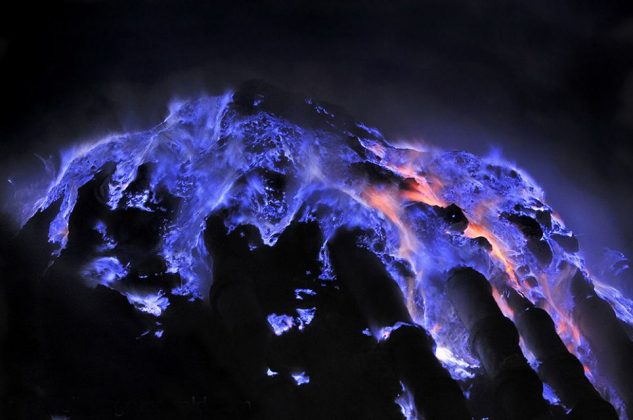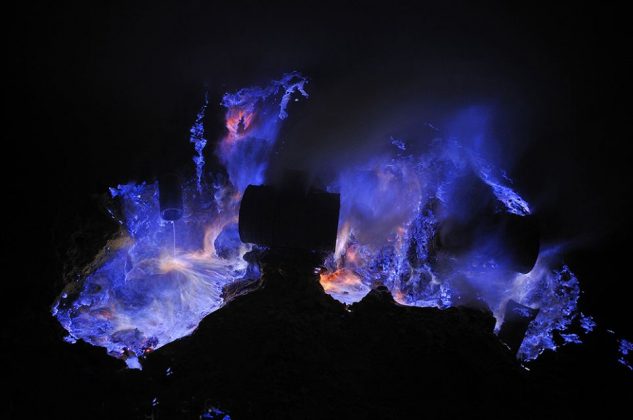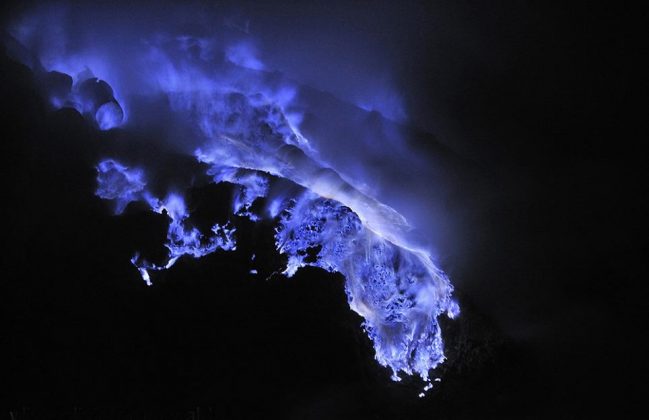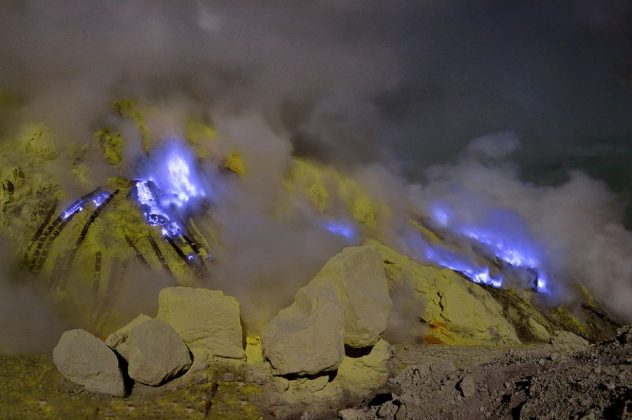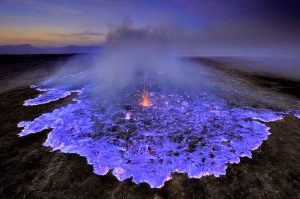
The Ijen volcano complex is a group of stratovolcanoes in the Bondowoso Regency of East Java, Indonesia. It is inside a larger caldera Ijen, which is about 20 kilometers wide. The Gunung Merapi stratovolcano is the highest point of that complex. The name “Gunung Merapi” means “mountain of fire” in the Indonesian language (api being “fire”); Mount Merapi in central Java and Marapi in Sumatra have the same etymology.
West of Gunung Merapi is the Ijen volcano, which has a one-kilometer-wide turquoise-colored acidic crater lake. The lake is the site of a labor-intensive sulfur mining operation, in which sulfur-laden baskets are carried by hand from the crater floor. The work is paid well considering the cost of living in the area, but is very onerous. Workers earn around Rp 50,000 – 75,000 ($5.50-$8.30) per day and once out of the crater, still need to carry their loads of sulfur chunks about three kilometers to the nearby Paltuding Valley to get paid.
Many other post-caldera cones and craters are located within the caldera or along its rim. The largest concentration of post-caldera cones run east-west across the southern side of the caldera. The active crater at Kawah Ijen has a diameter of 722 metres (2,369 ft) and a surface area of 0.41 square kilometres (0.16 sq mi). It is 200 metres (660 ft) deep and has a volume of 36 cubic hectometres (29,000 acre·ft).
The lake is recognised as the largest highly acidic crater lake in the world. It is also a source for the river Banyupahit, resulting in highly acidic and metal-enriched river water which has a significant detrimental effect on the downstream river ecosystem. In 2008, explorer George Kourounis took a small rubber boat out onto the acid lake to measure its acidity. The pH of the water in the crater was measured to be 0.5 due to sulfuric acid.
The Blue Lava
“This blue glow—unusual for a volcano—isn’t, of course, lava, as unfortunately can be read on many websites,” Grunewald told National Geographic in an email about Kawah Ijen, a volcano on the island of Java.
The glow is actually the light from the combustion of sulfuric gases, Grunewald explained.
Those gases emerge from cracks in the volcano at high pressure and temperature—up to 1,112°F (600°C). When they come in contact with the air, they ignite, sending flames up to 16 feet (5 meters) high.
Some of the gases condense into liquid sulfur, “which continues to burn as it flows down the slopes,” said Grunewald, “giving the feeling of lava flowing.”
Photo
Video
Reference:
Wikipedia: Ijen volcano
National Geographic: Stunning Electric-Blue Flames Erupt From Volcanoes


